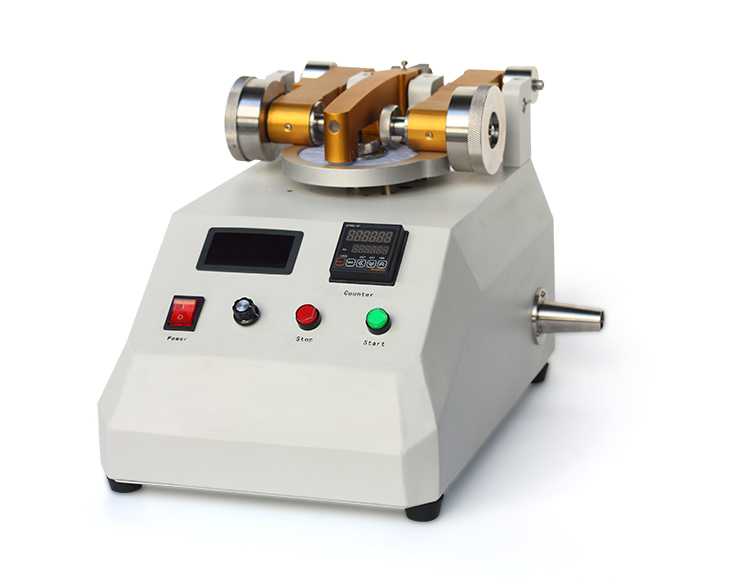Scope of application of Taber abraser

I. Brief Introduction
The Taber Abraser is a device used to test the abrasion resistance of flat products. It employs rotating abrasive wheels of various types to spin and rub against samples, thereby assessing the material's wear resistance. This equipment has extensive applications in fields such as materials science and product quality control.
II. Standards
1. ISO 9352 Plastics - Determination of resistance to wear by abrasive wheels 2. ISO 5470 Rubber- or plastics-coated fabrics - Determination of abrasion resistance 3. ASTM D1044 Test method for resistance of transparent plastics to surface abrasion 4. ASTM D3884 Standard guide for abrasion resistance of textile fabrics (rotary platform, double-head method) 5. JIS K6902 Testing method for laminated thermosetting high-pressure decorative sheets Features

III. Characteristics
The Taber Abraser possesses the following characteristics:
High Precision: It utilizes sophisticated electronic control systems and sensors to achieve highly accurate test results.
Versatility: Capable of performing multiple test methods, such as flat abrasion and circular abrasion, it adapts to the testing needs of different materials.
Automation: Equipped with an automated control system, it allows for setting test parameters, controlling test duration and load, and automatically recording test data, enhancing test efficiency and reducing human error.
Stability: With stable and reliable performance, it can operate continuously for extended periods. Its robust structure ensures a long service life.
Ease of Operation: The operating interface is clear and intuitive, and the operation is simple and easy to understand. Operators can master the operating skills after minimal training.
IV. Scope of Application
The Taber Abraser is widely used to evaluate the abrasion resistance of various materials, including but not limited to:
Soft materials such as leather, fabric, coatings, and paper.
Hard materials such as ceramic tiles, glass, metal coatings, and plastic coatings.
Wear-resistant components in industrial products such as electronic components, automotive parts, and furniture.
Additionally, the Taber Abraser is suitable for testing the abrasion resistance of various daily-use items such as luggage, carpets, cardboard, and clothing.
In summary, the Taber Abraser is a high-precision, versatile, automated, stable, reliable, and easy-to-operate abrasion resistance testing device with a wide range of applications and significant value.
Qinsun Instruments Co., LTD, established in 2012, focuses on the research and development, design, and production of textile testing instruments. It provides textile testing instruments and services to academic research units and testing institutions. Qinsun is currently one of the most competitive and R&D-capable manufacturers of textile testing instruments in China, with an R&D team composed of experienced engineers. We are dedicated to serving our customers with all our hearts and striving to promote technological innovation in textile testing instruments.
2025-01-09 10:16

